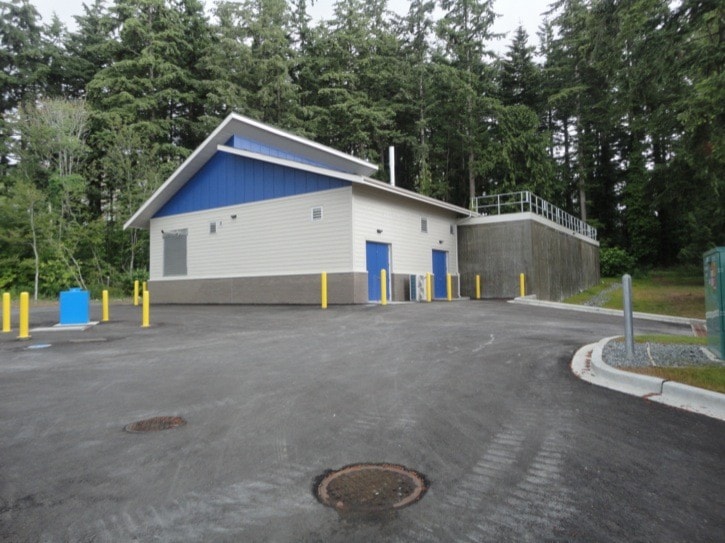White Rock's water utility – acquired from EPCOR by the city last year for an amount still undisclosed, pending arbitration – has been characterized by council critics as a "white elephant."
They have charged that the utility is saddled with an aging infrastructure, with and an arsenic count approaching Health Canada's maximum allowable concentration (MAC) limit.
But city engineering and operations director Greg St. Louis and newly hired utilities manager Dr. Saad Jasim said in an interview that they see a system that – given a rapid turnaround since the city took over operations a year ago – is moving quickly to a proactive position on water quality.
By acquiring the water utility, the city became eligible for federal grants for two-thirds funding of needed arsenic and manganese treatment plants – money that was not available to EPCOR as a private corporation, St Louis said.
"We also got skilled EPCOR skilled employees, certified operators and some of the administrative staff," he said.
"Our goal is to have the best water quality in the Lower Mainland," St. Louis said, adding that the city has completed a total water quality management plan (TWQMP) and has upgraded monitoring technology.
He points to the two treatment plants the city will build between now and 2019 which will reduce not only the arsenic but manganese content of White Rock water.
Manganese – which, like arsenic, enters the water supply through natural erosion of rock and soil – is currently classed only as an aesthetic concern, but St. Louis and Jasim noted that Health Canada is studying the effects of long-term exposure with an eye to setting a MAC limit.
"If Health Canada is looking at it, you know it is coming," said Jasim. "We will be ahead of that."
St. Louis acknowledged, however, that rising arsenic levels at several city wells have been a concern for years.
"A graph (of arsenic levels) from 2011 to 2015 shows we are approaching the limit and have been for some time," he said. "That's why we need to implement the arsenic treatment program."
With a deadline to complete secondary treatment of the water extended by Fraser Health until Feb. 1, the city is currently testing and flushing the system to assess the impact of chlorination – which some studies have shown have a potential to increase overall arsenic levels by dislodging accumulated particles from pipes.
"But, so far, short-term results have been good," St. Louis said.
St. Louis said the city is currently managing the overall level of arsenic in the water by blending water from various wells at the newly-completed Oxford reservoir.
While an April 2014 report from EPCOR to Fraser Health said that blending between wells was not possible at any significant level – leading to higher arsenic levels in the high east end of the system around the Merklin Street wells – St. Louis said procedures have changed since then.
"The Oxford site wasn't built at the time," he said. "Right now we can pump everything into Oxford, because we're operating on pressure – before we were operating (using) the height of the of the old water tower to provide pressure."
The city has also installed sampling stations throughout the city, he said, and is testing throughout the distribution system in addition to the wells.
Connecting White Rock to the Metro Vancouver water system – as an alternative to building the arsenic and manganese treatment plants is "not as simple as just hooking it up," St. Louis said, adding that it would involve infrastructure and pumping upgrades that are estimated at some $27 million, not counting an annual water cost of $1.5 million.
